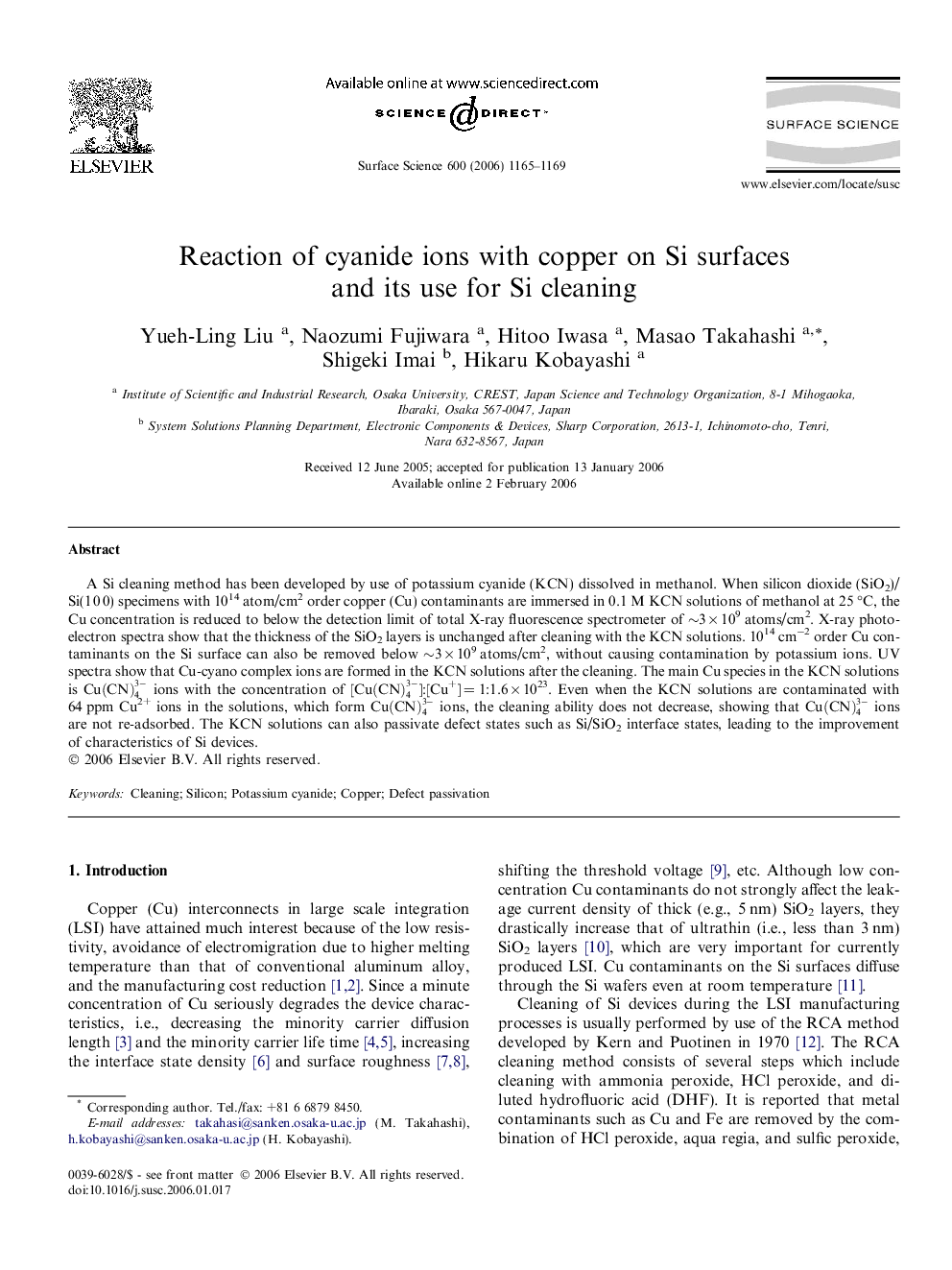| Article ID | Journal | Published Year | Pages | File Type |
|---|---|---|---|---|
| 5425920 | Surface Science | 2006 | 5 Pages |
A Si cleaning method has been developed by use of potassium cyanide (KCN) dissolved in methanol. When silicon dioxide (SiO2)/Si(1 0 0) specimens with 1014 atom/cm2 order copper (Cu) contaminants are immersed in 0.1 M KCN solutions of methanol at 25 °C, the Cu concentration is reduced to below the detection limit of total X-ray fluorescence spectrometer of â¼3 Ã 109 atoms/cm2. X-ray photoelectron spectra show that the thickness of the SiO2 layers is unchanged after cleaning with the KCN solutions. 1014 cmâ2 order Cu contaminants on the Si surface can also be removed below â¼3 Ã 109 atoms/cm2, without causing contamination by potassium ions. UV spectra show that Cu-cyano complex ions are formed in the KCN solutions after the cleaning. The main Cu species in the KCN solutions is Cu(CN)43- ions with the concentration of [Cu(CN)43-]:[Cu+] = 1:1.6 Ã 1023. Even when the KCN solutions are contaminated with 64 ppm Cu2+ ions in the solutions, which form Cu(CN)43- ions, the cleaning ability does not decrease, showing that Cu(CN)43- ions are not re-adsorbed. The KCN solutions can also passivate defect states such as Si/SiO2 interface states, leading to the improvement of characteristics of Si devices.
